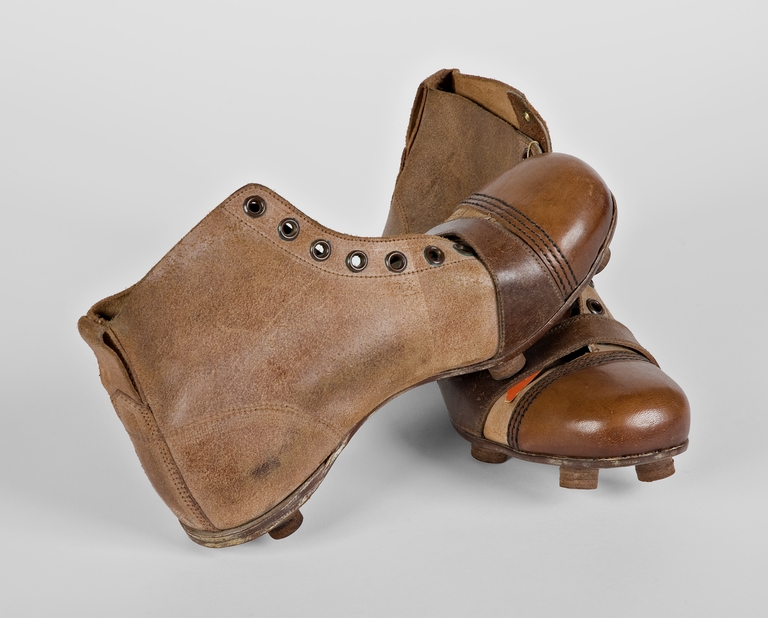Birth and evolution of soccer
Soccer was born in England in the mid-19th century. Alternative versions of the game existed long before that.
The earliest known examples of a team game involving a ball date back more than 3,000 years to ancient Mesoamerican cultures. However, the first ball game that also involved kicking took place in China between the 3rd and 2nd centuries BC. The so-called ‘cuju’ was played with a round leather ball sewn with fur or feathers inside. The game later spread to Japan, Australia, and throughout the rest of the world. A modified version developed in each country.
The most credited history relates that the game developed in England in the 12th century. In addition to kicking, the game also involved hitting the ball with fists. Matches were held in large city areas and involved large numbers of people. This form of soccer was very rough and violent, to the point of causing damage to the city and sometimes the death of some participants. For this reason, the game was banned for several centuries.
Before today’s soccer caught on, it took a long time. Meanwhile, it was introduced in schools. Especially at Eton, the ball was played exclusively with the feet and the game was called ‘the dribbling game.’
An important event in the history of soccer occurred in 1863 in London, when the first association was formed. It was decided that carrying the ball with the hands was not allowed, the weight and size of the ball were standardized, and it was distinguished once and for all from rugby, a game that originated at the same time and also in England.
The rules, however, were still very flexible. The number of players was variable, for example, and uniforms were not used to distinguish teams. English teams preferred to run forward with the ball, similar to rugby, while Scottish teams passed the ball between their players, a pattern that soon became predominant.
By the end of the 19th century, it went from being the entertainment sport for the British working class to having an unprecedented number of spectators, up to 30,000. Following British colonization, soccer also spread to populations in other parts of the world, especially South America and India.
By the 1880s, interest in the game had shifted to a level where tickets for matches were sold. That’s when soccer began to develop to a professional level and players began to be paid. In 1885 professional soccer was legalized and the Football League was founded shortly thereafter.
For a long time, British teams were dominant. After a few decades, clubs in Prague, Budapest, and Siena (Italy) would be major contenders for British dominance. The Fédération Internationale de Football Association (FIFA) was formed in 1904, and a founding act was signed by representatives of France, Belgium, Denmark, the Netherlands, Spain, Sweden, and Switzerland.
The evolution of soccer shoes over time
In the beginning, players wore work shoes. They were difficult to move in and quite heavy on the foot because they were not designed for running. They usually had a steel-reinforced toe, which led to injuries when the player accidentally kicked another. In addition, the regulations prohibited the use of spikes or anything else protruding from the soles, so they had no grip whatsoever.
Because of British weather conditions, the shoes did not cooperate during play: the leather got soaked and the smooth soles made it slippery. The first cleats on shoes were introduced in 1891.

Photo credit: Museo del calcio website
Soon after, the first real soccer shoes were designed. They were made of thick leather and fastened at the ankle for better protection. They remained very heavy, however, about 0.5 kg dry.
After World War II, interest in the sport increased. New research and technology enabled developers to create shoes that were flexible and much lighter. They were also lower on the leg to improve flexibility and agility. This shoe model caught on in southern Europe and South America, where the weather conditions were less muddy than in England.
In the 1950s, Adidas launched an innovative soccer shoe on the market, characterized by the presence of screw-on cleats that could be changed according to ground conditions or weather. This innovation meant that soccer players no longer had to own several pairs of shoes, but could simply replace the cleats, rubber or plastic, on the same shoe.
As time went on, soccer shoes became lighter and lighter, but the real transformation occurred in their design. Initially available only in black until the mid-20th century, around the 1970s designers began to experiment with a wider range of colors. At the same time, materials also underwent significant improvements.
During this revolution in the footwear industry, one of the most famous and beloved soccer shoes was created: the Predator from Adidas. Thanks to the rubber strips applied to the upper part of the shoes, made of the same material used for tennis rackets, it increased the power and accuracy of shots. During this period, players gained approval to wear brand-specific soccer shoes.
The need for greater flexibility led to the evolution of the lower part of the shoes. New developments from this period allowed the soles to better support the cleats, providing greater freedom of movement.
Today, thanks to laser technology, soccer shoes are able to be customized to better fit each individual’s foot. Customization is also a popular option these days. Professionals choose to put their name on the shoe and sometimes their jersey number.
Cleats today have become more like a small blade for better grip on the field. Rubber or plastic cleats remain available, in any case. Even further technological developments have allowed the introduction of microchips and tracking tools into the shoes, which allow the player to track his movements and record his performance via a computer or smartphone.
Adidas for a long time was the most popular brand, but nowadays there are several, companies such as Nike and Umbro compete alongside Adidas through big-name player sponsorships.
The legend of Cristiano Ronaldo’s Mercurials
Since his debut, Cristiano Ronaldo has worn Nike branded soccer shoes. In the late 1990s, the Mercurial line was launched, and in the following years, Ronaldo began a series of collaborations.
Since signing with Team Swoosh in 2003, Ronaldo has worn more than 100 variations of the Mercurial. The line was designed for speed, with a ground-contact feel essential for sprints. Ronaldo’s collaboration with Nike led to significant improvements in the lightweight and fit of the shoes.
The famous gold Mercurial Vapor II R9 was iconic during Ronaldo’s formative seasons at Manchester United, marking a new beginning for the Portuguese player. In 2006, Nike introduced the revolutionary Mercurial Vapor SL, made entirely of carbon fiber and weighing only 185 grams, confirming Ronaldo as one of the best players in the world.
With his move to Real Madrid, Ronaldo received his first signature shoe, the CR Mercurial Vapor SuperFly II, featuring the “Safari” print and an innovative adaptive traction system.
In the following years, Ronaldo continued to provide crucial feedback for the evolution of the Mercurial, culminating with the new Nike Zoom Mercurial CR7. It was the last footwear model Cristiano Ronaldo wore in a World Cup, marking an era in soccer.

Photo credit: intersport website
Featuring a sleek design with distinctive lines and refined details, the shoe is distinguished by its white and blue main colorway, enhanced by the copper-colored swoosh.
This model, destined to become a legend even in the Qatari context, embodies Cristiano Ronaldo’s unique personality both on and off the field.
Thanks to its design and the technology used, it ensures comfort, freedom of movement and optimal performance during dribbling and shooting. Nike Air Zoom technology provides explosive cushioning for even more intense shots and superior ball control during play. This model is designed with nothing left to chance, ensuring the best possible experience on the court.
A journey of innovation
The history of soccer shoes reflects the evolution of the game itself, moving from rudimentary and heavy models to modern lightweight and technologically advanced footwear. From ball games in ancient cultures to the founding of the first associations and leagues in the 19th century, soccer has gone through a long journey of development.
The introduction of cleats, innovation in materials, and increasingly sophisticated designs have transformed shoes from a simple protective tool to a key element in player performance.
The modern era of soccer shoes sees major brands such as Nike and Adidas competing for market leadership, with world-caliber players such as Cristiano Ronaldo directly influencing shoe design and performance.
The future of soccer shoes promises to be even more technologically advanced, with bespoke customization and the integration of new technologies that will enable players to maximize their performance and better adapt to the demands of the game. Continued research and development in the industry promises to take soccer shoes to new heights of innovation, providing the players of today and tomorrow with a competitive advantage on the field.
You may also be interested in the following articles:

Elisabetta Franchi: ageless fashion. From her debut at Pitti Bimbo to the launch of her first line of shoes for girls
The renowned Italian designer presents her timeless vision of fashion, expanding her creative realm with the new collection of shoes for little fashionistas.

“Furry” slippers: trend and style to face winter
From the origins to the current day, the evolution of slippers over time

Best of the year 2023: Footwear trends, from iconic comebacks to quirky creations
A journey into the eccentricity of footwear that marked the year in fashion













































